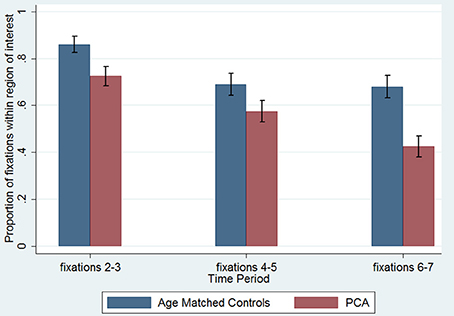
94% of researchers rate our articles as excellent or good
Learn more about the work of our research integrity team to safeguard the quality of each article we publish.
Find out more
GENERAL COMMENTARY article
Front. Hum. Neurosci., 11 November 2014
Sec. Sensory Neuroscience
Volume 8 - 2014 | https://doi.org/10.3389/fnhum.2014.00908
This article is part of the Research TopicThe enigma of Bálint’s syndrome: complexity of neural substrates and cognitive deficitsView all 13 articles
This article is a commentary on:
Scene perception in posterior cortical atrophy: categorization, description and fixation patterns
 Timothy J. Shakespeare1*
Timothy J. Shakespeare1* Keir X. X. Yong1
Keir X. X. Yong1 Chris Frost2
Chris Frost2 Lois G. Kim2
Lois G. Kim2 Elizabeth K. Warrington1
Elizabeth K. Warrington1 Sebastian J. Crutch1
Sebastian J. Crutch1A corrigendum on
Scene perception in posterior cortical atrophy: categorization, description and fixation patterns
by Shakespeare, T. J., Yong, K. X. X., Frost, C., Kim, L. G., Warrington, E. K., and Crutch, S. J. (2013). Front. Hum. Neurosci. 7:621. doi: 10.3389/fnhum.2013.00621
The legend of Figure 6 is labeled incorrectly. Contrary to the legend, the blue bars refer to “Age Matched Controls” and the red bars refer to “PCA.” The results as described in the main text remain unchanged.
The corrected version of Figure 6 is presented below:

Figure 6. Proportion of fixations inside the young control defined region of interest, by time period. The first fixation is omitted as it is predetermined by a central drift correction at the start of each trial. Error bars show standard error.
The authors declare that the research was conducted in the absence of any commercial or financial relationships that could be construed as a potential conflict of interest.
Keywords: psychology, eye tracking, Agnosia, Alzheimer's disease (AD), scene perception
Citation: Shakespeare TJ, Yong KXX, Frost C, Kim LG, Warrington EK and Crutch SJ (2014) Corrigendum: Scene perception in posterior cortical atrophy: categorization, description and fixation patterns. Front. Hum. Neurosci. 8:908. doi: 10.3389/fnhum.2014.00908
Received: 17 October 2014; Accepted: 23 October 2014;
Published online: 11 November 2014.
Edited and reviewed by: Magdalena Chechlacz, University of Oxford, UK
Copyright © 2014 Shakespeare, Yong, Frost, Kim, Warrington and Crutch. This is an open-access article distributed under the terms of the Creative Commons Attribution License (CC BY). The use, distribution or reproduction in other forums is permitted, provided the original author(s) or licensor are credited and that the original publication in this journal is cited, in accordance with accepted academic practice. No use, distribution or reproduction is permitted which does not comply with these terms.
*Correspondence:dGltLnNoYWtlc3BlYXJlLjEwQHVjbC5hYy51aw==
Disclaimer: All claims expressed in this article are solely those of the authors and do not necessarily represent those of their affiliated organizations, or those of the publisher, the editors and the reviewers. Any product that may be evaluated in this article or claim that may be made by its manufacturer is not guaranteed or endorsed by the publisher.
Research integrity at Frontiers

Learn more about the work of our research integrity team to safeguard the quality of each article we publish.